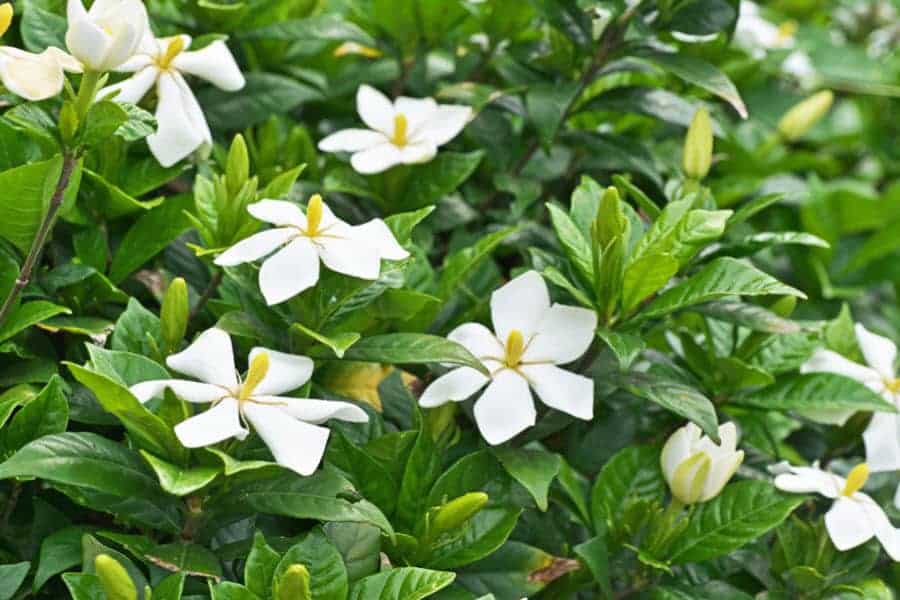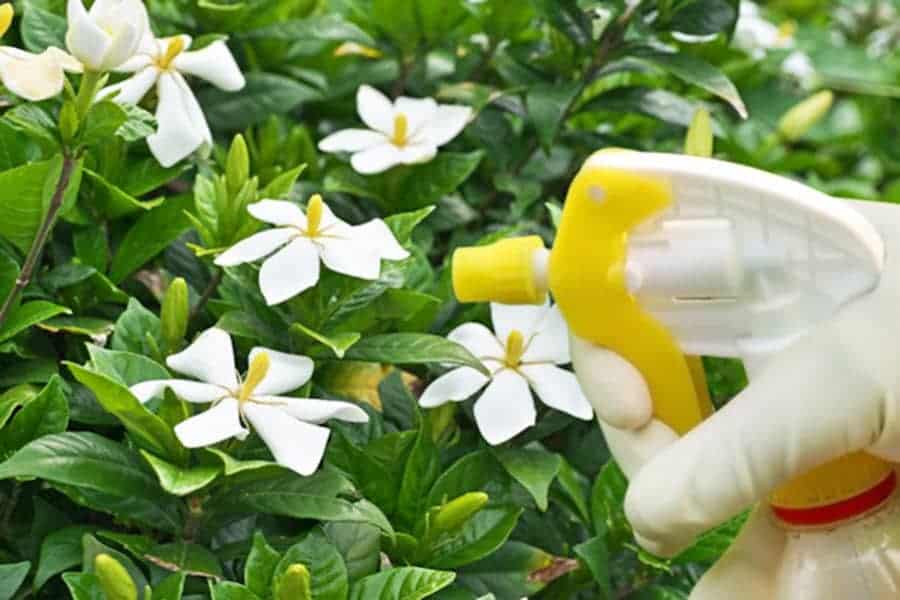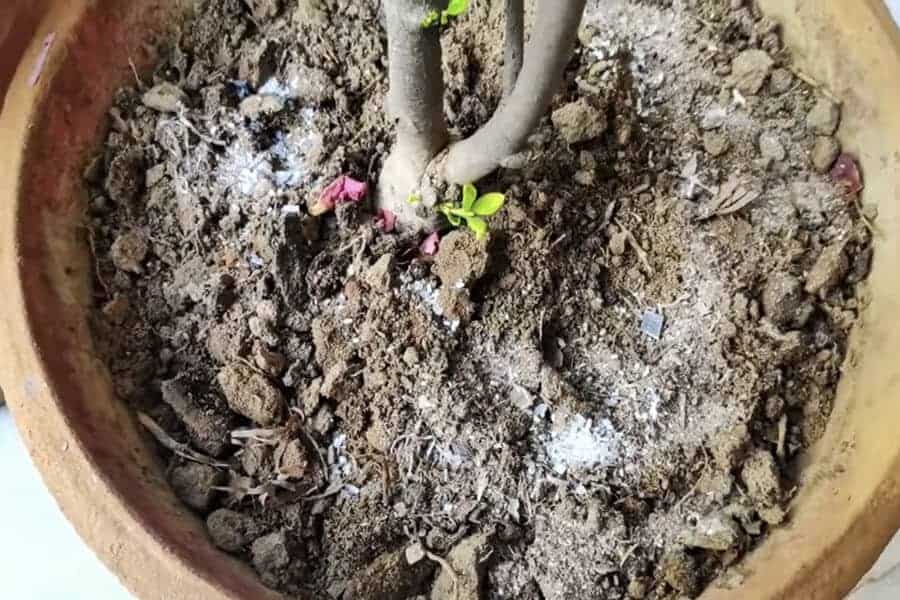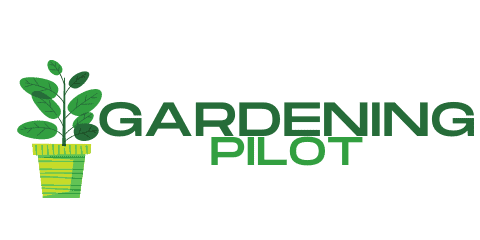
Using Epsom salt for treating yellow leaves in Gardenia is a highly talked about topic. Despite the lack of scientific research and evidence on the subject, many gardeners have experimented with Epsom salt and interestingly found amazing results.
To treat gardenias with Epsom salts, mix 1 tablespoon of Epsom salt with a gallon of water and foliar spray on the leaves. Alternatively, you can take a handful of Epsom salt and sprinkle it around Gardenia’s roots. Pour some water over it to leach into the soil. Likewise, you can drench the ground using Epsom salt solution.
If you are new to Epsom salt applications for plants and wondering how it may affect your Gardenias, continue reading. Working with salt in a garden isn’t a complicated task. However, if you don’t do it the right way, your plants may sustain more damage than growth.
How To Know If Your Gardenias Need Epsom Salt Treatment?
The idea behind treating Gardenia with Epsom salt is to replenish magnesium deficiency. If you are experiencing excessive leaf drops or yellow leaves, take it as a telltale sign of a lack of magnesium or iron.
- Yellowing between the leaf veins shows magnesium deficiency in plants.
- On the other hand, yellow leaves with dark green veins indicate insufficient iron levels.
To remedy the cause, you have to feed the missing nutrient to the plant; therefore, it’s crucial to know what your Gardenia is lacking. When in doubt, collect some soil and take it to your local nursery and get it tested.
In many cases, yellow-leaved gardenias are brought back to life by simply treating them with Epsom salt or magnesium sulfate.
If you have tried everything from fertilizing to watering your gardenias, but the result doesn’t seem promising. You must try the Epsom salt solution – arguably one of the most efficient and economical ways to make your plant leaves green again.
NOTE: Yellow foliage in Gardenia isn’t always caused by mineral deficiency. It can also result from poor drainage, pest, incorrect temperatures, or high pH.
Best Ways To Treat Gardenias With Epsom Salts
Let’s talk about the different ways you can use Epsom salt and treat magnesium deficiency in Gardenias.
Epsom Salt Foliar Spray

Foliar spray is one of the most effective methods to treat plants suffering from certain nutrient deficiencies. Take one tablespoon of Epsom salt per gallon of water and stir it well. Spray the solution on the leaves and drench the soil by pouring it on the plant’s root. You can use it every two to four weeks.
During Spring, when new leaves are emerging, foliar feeding Epsom salt will produce remarkable results. You can also use it with fertilizers.
Add Epsom Salt to Soil

Supplementing the soil with Epsom salt is a widely used application. Depending on the size of your Gardenias, take a medium handful of Epsom salt and sprinkle it all around the root and base of the plant. Next, pour some water over it, so the salt can leach into the soil and works its magic.
The above applications are ideal for treating both potted and outdoor Gardenias.
Essential Tips For Using Epsom Salt in Garden
While treating Gardenia or other plants with Epsom salt, there are a few things to consider.
- Use Epsom salt only as a supplement. It’s not a substitute for your primary fertilizers. Plants also need other nutrients such as nitrogen, phosphorus, and potassium.
- Treat your plants with Epsom salt during the early growing season. Avoid spraying the solution on hot days as it may cause leaf scorch.
- Magnesium deficiency in plants doesn’t always mean a lack of magnesium in the soil. Sometimes, it’s a case of high phosphorous levels that prevent the plant from absorbing adequate magnesium from the soil. To determine the exact cause, always test your soil before doing any remedy.
- Epsom salt helps neutralize alkaline levels. So when your soil is already acidic, and you use salt over it, the results may not be favorable.
- If your Gardenias leaves are turning yellow, it’s due to chlorosis. Add a small amount of insecticidal soap or horticultural soil to your Epsom salt foliar spray to increase the chlorophyll levels in plants.
- After spraying the Epsom salt solution, do not water the plant until it gets dry.
Are Epsom Salt Benefits Anecdotal?
When it comes to using Epsom salt for plants, people have varied opinions. It’s mainly due to a lack of scientific evidence.
Some researchers claim Epsom salt for gardens is a myth and can cause more harm than good. Then there are many gardening stories of people who have experienced various benefits from treating Gardenias with Epsom salt.
Who do you believe? I’d say your own experience. Epsom salt is cheap and readily available so why not give it a shot and see the truth for yourself. If you use the salt in the correct ratio and amount, magnesium and sulfur toxicity should not occur.
It’s true that Epsom salt is primarily used in roses, tomatoes, and peppers. It’s not a widely used fertilizer for Gardenia but has produced outstanding results for gardeners who have used it. It may not cure extreme magnesium deficiency but is undoubtedly effective for treating minor disorders, which is often the case.
Frequently Asked Questions
Q. Is Epsom salt necessary for Gardenia?
No, it’s not. Gardenias don’t need to be treated with Epsom salt unless they are suffering from magnesium deficiency. Yellowing of leaves is a major indication.
Q. Can too much Epsom salt hurt plants?
Excessive use of Epsom salt will cause more harm to plants than good. It imbalances the soil chemistry resulting in stunted growth of plants, dark foliage, and burned roots. High levels of magnesium sulfate inhibit calcium uptake in plants and increase mineral contamination. Overdoing a dose of fertilizers will almost always hurt the soil and plants.
Q. What are the benefits of using Epsom salt for Gardenias?
Although not scientifically proven, treating Gardenias using Epsom salt makes foliage greener, promotes blooms, deters pests, neutralizes soil pH, improves seed germination and nutrient uptake, and more.
Q. What are the best Epsom salt brands for plant use?
Any Epsom salt from your local grocery store will work. If you can’t find one, go for Epsoak Pure Epsom.
Final Words
The primary role of Epsom salt in a garden is to supply magnesium and sulfur. These micronutrients support the production of chlorophyll in plants tissue. Therefore, Epsom salt comes in handy for treating yellow leaves in Gardenia.
